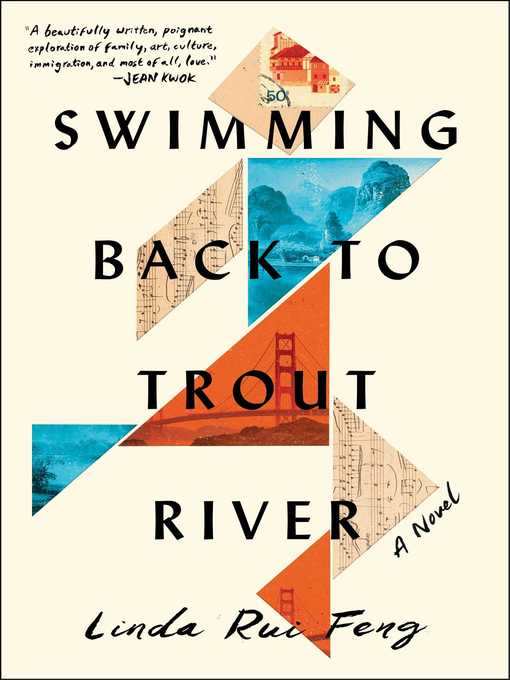
Swimming Back to Trout River
A Novel
- اطلاعات
- نقد و بررسی
- دیدگاه کاربران
نقد و بررسی

December 1, 2020
In a Chinese village in 1986, ten-year-old Junie is dismayed to receive a letter from her father, who promises to return soon from America and take her there. Junie would rather stay with her grandparents, and she doesn't even know that her parents are now estranged. A debut from University of Toronto professor Feng; with a 60,000-copy first printing.
Copyright 2020 Library Journal, LLC Used with permission.

March 1, 2021
Against the backdrop of China's Cultural Revolution, a husband and wife are afraid to share their deepest longings and regrets. Debut novelist Feng writes within the context of two Chinese concepts: yuanfen and zaohua. As explained in a chapter called "The Improviser's Guide to Untranslatable Words," yuanfen concerns the relationship between two people "brought together in ways large or small, for a few minutes or for decades," while zaohua encapsulates the insignificance of the individual in "the makings and transmutations" of a world "indifferent to human pain." When Cassia and Momo meet in 1973, they both avoid sharing the yuanfen experiences that have already deeply marked them. While an engineering student in Beijing in the '60s, Momo was deeply influenced by a young violinist. Dawn--who goes on to follow her unforeseeable trajectory in a parallel subplot--introduced Momo to music. Although his commitment to proletariat ideals at the time conflicted with Dawn's commitment to art, music will remain crucial to him in ways he can't explain to Cassia. Meanwhile, Cassia's belief in yuanfen and zaohua has been sharpened by a trauma she is too ashamed to share with Momo: When she was 23, she witnessed the gruesome death of the young man she loved when he fell from a fifth story window while being interrogated by revolutionary vanguard members. Based on their pasts, Cassia and Momo react differently to their daughter Junie, who was born without legs beneath her knees. Ever optimistic Momo dotes on Junie while pessimistic Cassia's love is tinged with guilt and a sense of zaohua. Momo goes to America for grad school in 1981, and Cassia follows several years later, leaving Junie with her paternal grandparents, who give her the nurturing Cassia knows she can't. With disarmingly quiet prose, Feng digs beneath Cassia's and Momo's reluctance to mine their emotional depths as they struggle to grasp their individual experiences as well as their fractured relationship. Filled with tragedy yet touched with life-affirming passion.
COPYRIGHT(2021) Kirkus Reviews, ALL RIGHTS RESERVED.

March 15, 2021
Feng's lithe debut moves with grace from Communist China to San Francisco and the Great Plains, and from the 1960s to the 1980s, as it follows four interlocked lives. Aspiring engineer Momo meets violinist Dawn at college in Beijing shortly before their lives are torn apart by the cultural revolution. Years later, he marries Cassia, who works at the same factory he does, and they have a child, Junie, who is born without lower legs. At the same time that Dawn defects to the U.S., Momo, unbeknownst to Dawn, enrolls in graduate school there. Cassia, unable to cope, leaves Junie with Momo's parents in the village of Trout River. Feng moves fluidly back and forth through time, lighting down on defining moments in her characters' lives, which might be as obvious as the incursion of political power or as evanescent as the emotions brought to life by nature or a piece of music. With the lightest of touches, Feng vividly portrays the experience of living in China during Mao's rule as well as the pressures of being a new immigrant. Looking deeply into the ""invisible mesh"" that links her characters' lives, Feng weaves a plot both surprising and inevitable, with not a word to spare.
COPYRIGHT(2021) Booklist, ALL RIGHTS RESERVED.




دیدگاه کاربران